The literal translation of tegelwippen is "tile wiping." In this context, it means getting rid of tiles. See, most homes in Dutch cities have their yard covered with tiles to make a patio. This makes lawn care easy, as all you have to do is pull the occasional weed from between the tiles. But there's a new campaign, spearheaded by Remco Moen Marcar, to encourage people to remove the tiles and plant trees and other greenery, in order to cool the city, improve drainage, and combat climate change. And what better way to get people involved than a competition?
The competition called the NK Tegelwippen began about a month ago and will continue through October, to find which town in the Netherlands can remove the most tiles from their private land, calculated as tiles per thousand residents. Those who've already taken the plunge say they are enjoying the outdoors more with cool gardens under the shade of trees. So far, the leader of the contest is the town of Venlo, at 144 tiles per thousand, a total of 14,636 tiles whipped away. The sponsors of the contest arrange to collect and dispose of the tiles, which are being recycled into building material. Read how the tegelwippen is going at The Guardian. -via Metafilter

Al Condominio, a restaurant that opened last month in Verona, Italy, would like for its patrons to fully enjoy the social aspects of public dining. This requires putting away phones and, hopefully, talking to other human beings who are physically present.
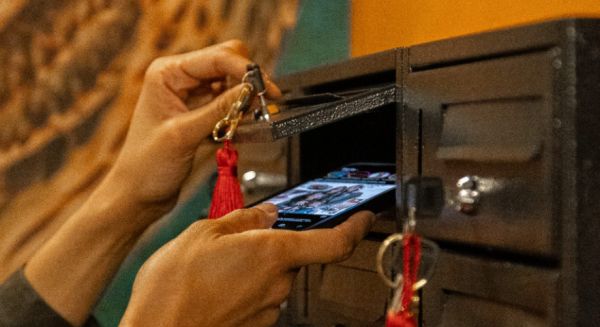
The Guardian reports that to encourage socializing, the restaurant encourages patrons to lock their phones in boxes. Once seated at a table, the patron hands the box key to a waiter, who provides free wine. So far, about 90% of patrons participate in this program.
Patrons can also write reviews and leave them in their phone boxes as they exit. Patrons who write the most positive reviews will receive free meals the next time that they visit.
-via Messy Nessy Chic | Photos: Al Condominio
Would you like to smell like McDonald's French fries? The company clearly thinks so and is marketing its smell broadly, including, most recently, branded perfume. It's also counting on the smell of its food to be so recognizable that people will identify it without any other data aside from the company's particular shade of red.
Ads of the World reports that these billboards in the Netherlands are set about 200 meters (that's about 112.5 DeForest Kelleys stacked end to end) from McDonald's restaurants. The company hopes that the smell will trigger cravings for the actual food products.
"It's the first billboard where the smell becomes the ad." I wonder what other products, brands, or companies could market themselves this way successfully. Perhaps comic book and gaming stores, as they usually have a noticeable aroma.
-via Marginal Revolution
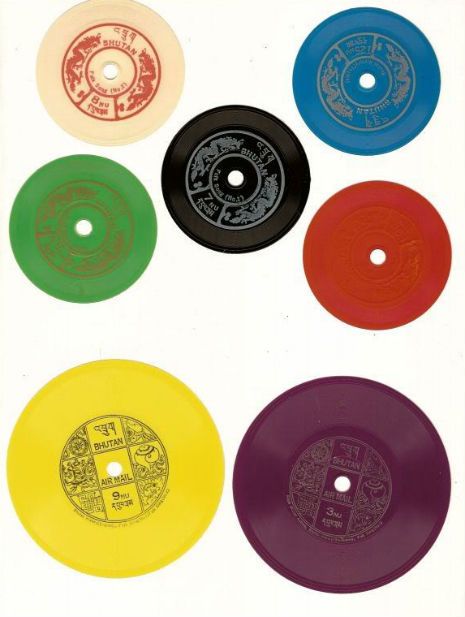
In the early 1960s, an American adventurer named Burt Kerr Todd fell in love the with the isolated and impoverished Himalayan nation of Bhutan. He wanted to help the nation economically develop and so proposed that the kingdom produce highly unusual and therefore collectible postage stamps.
Among these innovative stamps were tiny yet completely functional vinyl records that shared information about and music from Bhutan, such as the above recording of the national anthem. Others provide basic information about the nation to international audiences that might have never have even heard of Bhutan.
The Vinyl Factory reports that Bhutan issued a set of seven stamps in 1972 in both English and Dzongkha.
-via Nag on the Lake

Disney Parks are going full Star Wars with a new line of Star Wars-themed food and drink items launching on Star Wars Day, which is, of course, May the 4th. The new items aren't limited to Galaxy's Edge, either. They will be available at various spots all across Disneyland, Walt Disney World, and Disneyland Paris. These include churros served in lightsaber hilts, a cake that looks like a stormtrooper helmet, death star chocolates, and the Princess of Alderaan Shake you see above, which is a salted caramel milkshake with whipped cream and edible glitter, garnished with two cinnamon rolls so you never forget who its named for. There are also serious entrees with alien names and various sweets with odd-colored icing to make them look alien. Check out the roundup of fanciful Star Wars foods coming to Disney Parks.
There's also an additional lineup of limited edition Star Wars food items that will only be available from May 4 until June 2, a period they call the Season of the Force, that you can check out here. -via Gizmodo
Remember a video from a few months ago in which different species of birds raced to show us how fast they can go? Red Side has made the same type of video for terrestrial animals. They are all shown moving at their species' maximum speed, the way they would only move if their lives were in danger. That means they are all shown running comically fast, one after another, as if it's a race. You won't see any sloths in this video, but it starts with a snail, and there's a turtle near the beginning making tracks like he's on fire. It's weird to see a kiwi being overtaken by a Komodo dragon, like the reptile wouldn't slow down long enough to eat the kiwi. The animals were produced by artificial intelligence, which hasn't quite mastered the way an elephant moves. Still, as funny as the race is, you'll learn about the relative speeds of various animals at their maximum. Meanwhile, if you ever see a critter running this fast in real life, you can be sure something scary is chasing them. Or else they are about to catch lunch.
It only takes about seven minutes to show us all the animals, then it switches and shows them to us again, from the perspective of the running creatures. It's a blur of landscape! -via Laughing Squid
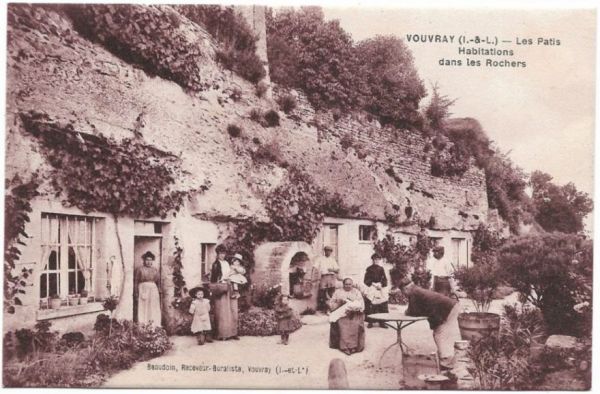
There are many thousands of caves that nature carved into the limestone of France. Neanderthals found shelter in them a half-million years ago, and later Homo sapiens did the same. In fact, people lived in those caves off and on up until the 20th century! And why not- they were sturdy rock fortresses that kept a habitable temperature year-round. Over time, the residents enlarged them, installed windows, doors, and chimneys, built out the fronts, and added gardens and modern amenities as they became available. There are around 14,000 such cave homes (habitations troglodytes) in the Loire Valley alone, although most are abandoned today.
These caves served as homes, churches, military bases, businesses, monasteries, and emergency hiding places for hundreds of years. One was even used as a secret place for satanic rituals. Now they are mostly empty sightseeing spots, but some have been converted into restaurants, nightclubs, and hotels. Read about the cave homes of France at Messy Nessy Chic.

In February, the US Patent Office granted Craig Wallace Coulter rights for this design for a unique version of the classic game. It consists of two 8x8 boards next to each other and wrapped around a cylinder. Four complete sets of pieces are necessary, possibly for four different simultaneous players. The pieces are attached to the cylinder with either velcro or magnets.
Coulter proposes, if I understand his application correctly, adding additional 8x8 boards to the cylinder, allowing for an even larger playing space, as well as additional players to the same game. At this point, like Risk or Succession Wars, diplomacy and treachery are likely components of the game.
Previously on Neatorama: 12 Bizarre Chess Variants
-via Weird Universe
When I was in school, history class was about the Revolutionary War, the Civil War, and World War II, every other year until the sixth grade, when we spent a year studying World War II because my teacher's husband fought in it. And then we found out our other teachers' husbands fought in it, too. But it was all from an American perspective (world history classes in the off years stopped at Columbus). Even today, there are many Americans who believe that World War II began on December 7, 1941. Yet Europe had been in a war for two and a half years already, and Japan had been at war for four years in China. Americans think we won the war, but Russia is pretty sure they did, at least in Europe. And the former Axis powers- how do they teach schoolchildren about what happened in World War II? In this video from Weird History, we get an overview of the perspective from which various nations around the world treat the subject of World War II in their history classes. Finland would like to have a word.
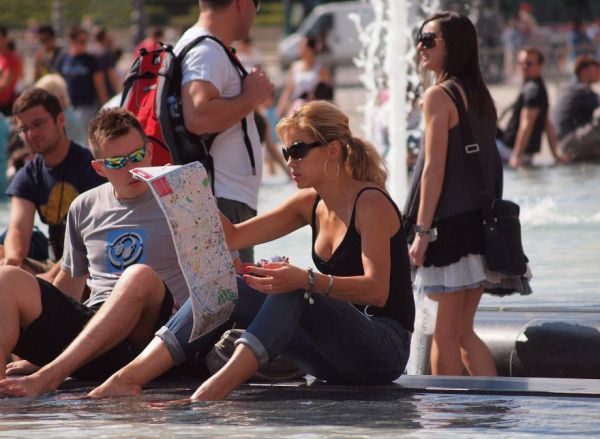
We all know at least one person who can magically find their way through an unfamiliar city, and at least one person who get hopelessly lost every time they leave familiar territory. Maybe you are one of those folks. Are people born with a sense of direction -or the lack of one? Do navigation skills depend on some innate talent or can it be trained? Or could a good sense of space and location be genetic? Scientists had trouble pinpointing the source of these skills until recently. GPS and virtual reality equipment have enabled more precise experiments that show why some people manage to get around better than others.
Navigational skill tends to run in families, but that doesn't mean it's genetic. Recent research points to a sense of direction being a matter of upbringing. Maybe you learn navigation from your parents, or possibly the culture itself. Some cultures, like Nordic countries and indigenous people of the Amazon, do better at navigating on average because everyone goes outside and travels from a young age. People who grow up in older and more eccentric European cities navigate better than those in planned cities laid out in a grid because they are forced to learn various methods of getting around. Experience matters. But what does this mean for younger generations who don't roam the neighborhood, depend on GPS, and see no reason to learn map reading or wayfinding? Read about the research into a sense of direction at Knowable magazine. -via Metafilter
(Image credit: Archibald Ballantine)
Aalish started finding flowers that had been left in her home, or near the door. A secret admirer? Her partner didn't know what she was talking about, so it was a mystery until she caught a stray cat in the act of bringing flowers! What a sweet gesture; she liked the camellias, and thought Aalish would like them, too. I am glad that their camellias bear so many blooms, and the cat can only reach so many of them. The couple fed the friendly cat and gradually took her in and named her Fiddy. It turns out that Fiddy really needed a home that appreciated flowers as much as she did. Oh yeah, and for another reason that will become apparent in the video. See more of Fiddy in her beautiful home in Aotearoa (which we call New Zealand) at TikTok and Instagram.
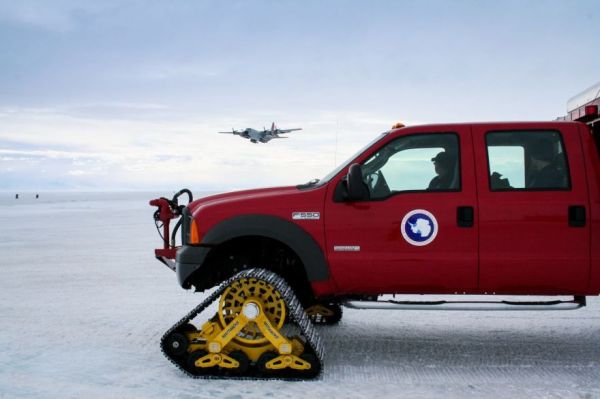
Antarctica doesn't get a lot of fires, but it's the windiest and driest continent in the world and thus fires are always a potential source of danger. Given the extreme weather conditions of the place, it's necessary that any potential fire sources be addressed immediately.
Haikai Magazine talked to Nicki Schauman, the senior firefighter at the America's Amundsen-Scott South Pole Station, where 7 firefighters and 2 dispatchers respond to fire threats. Most of their work consists of responding to medical emergencies (they are also EMTs), but fire risks are especially acute when planes land and take off at Amundsen-Scott.
Schauman and his colleagues have specialized gear adapted to function in the extreme cold. When it's busy, they often spend half the day in vans near the runway, ready to respond the moment that an aircraft accident happens.
-via Nag on the Lake | Photo: Antarctic Fire Department

John Albert Thompson emigrated from Norway and eventually made his way out to the western US during the Gold Rush, where he was a subcontractor for the postal service for 20 years. Thompson was called "The Viking of the Sierras," but everyone knew him as Snowshoe Thompson, because he delivered mail between Placerville and Genoa, Nevada, on skis, which he called snowshoes. His trips took three days to get to Placerville and three days to get back, a punishing trip over the Sierra Mountains in which he followed snow-covered wagon tracks. Thompson made this trip two to four times a month carrying up to 100 pounds of letters and packages -and silver from the mines.
Today, hikers can get a feel for the endurance Thompson had by retracing his route through the mountains, although there are roads in many of the spots now, plus better clothing and equipment and emergency communications. Read about Snowshoe Thompson and his service to the people of Nevada (which he was never paid for) and about the folks who hiked his route recently, at Atlas Obscura.
(Image credit: Brent Cooper)
The latest video from Action Lab gave me new things to think about. Somehow I missed the fact that astronauts on the International Space Station are now drinking out of cups instead of squeeze bottles with straws. How does that work? That's what the video is about. Another question is, why? Well, I am very much aware that drinking coffee or hot tea through a straw does not work because hot liquids need to be introduced to your mouth gradually for safety. But it's mainly because you don't get aroma from liquids that have no contact with air, which dulls the taste. That made me think of all these little kids drinking Capri Suns. Maybe if they were getting the full flavor, it wouldn't need so much sugar and artificial flavors. Be that as it may, the new gravity free cups are pretty clever. It makes you think about how different it must be to live in an environment devoid of something as fundamental to our lives as gravity. The video is only 3:45, the rest is an ad.

Scientists have long been fully aware that Uranus is filled with gas -- a lot of gas. But exploring deeper inside reveals more. Live Science reports that a recently published study describes a mushy substance deep in the interior of Uranus.
If we could actually get close enough, we might be able to smell this substance: semi-frozen methane. This conclusion departs from previous assessments of Uranus which concluded that the planet consists of mostly water and ammonia.
We will, though, have to wait for more advanced probes to deeply penetrate Uranus instead of relying only on data gathered by flybys, such as that procured by Voyager 2.
-via Dave Barry | Photo: NASA




